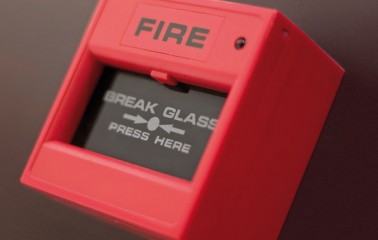Human and financial cost of false fire alarms

The Fire Industry Association (FIA) has urged businesses in the UK to consider the “human and financial cost” of false fire alarms, as it highlighted its on-going campaign to raise awareness of the problem.
A source at the fire industry trade association said that false fire alarms continue to present problems for fire and rescue authorities “up and down the country,” as resources are unnecessarily deployed to sites where there is no real blaze.
According to the FIA, recent statistics indicate that false call outs — some of which are deliberate — are putting a strain on resources at a time when many departments are faced with cuts. For example, in North Lincolnshire alone, 602 false alarms in 2012 are thought to have cost around £21,407, with 40 of them classified as malicious.
In response to the issue, the FIA plans to continue to promote its Cut False Alarm Costs campaign, aimed at educating firms on proper management of fire alarm and detection systems, and the benefits this brings.
Loss of productivity among staff is just one key pitfall associated with false alarms. Other costs include increased insurance premiums and possible future charging for attendance by fire and rescue services. A source at the FIA warned, “The costs of production loss coupled with potential fines will quickly dwarf the cost of managing and maintaining a fire detection system.”
Under the Localism Act 2011, local fire authorities can now charge following persistent false alarms.
Rabinder Dhami, Shropshire Fire and Rescue Service’s Community Fire Safety Manager, told the Shropshire Star, “Although the national average is estimated at £400 per call attended this can vary greatly depending on the type of incident reported and what resources need to be sent from which part of the county.”
Preventing false alarms
False alarms from fire detection alarm systems can arise from various different causes. Typical causes include:
- Pollutants in the air setting off smoke detectors (e.g. dust, aerosols and insects)
- Extremely high temperatures setting off heat detectors (e.g. from hot work activities)
- Vandalism or malicious acts
- Mistakes occurring in the use of the system
- The equipment being faulty or not being maintained properly
- Fire detectors or red “break glass” boxes being in the wrong place and being accidentally set off.
BS 5839-1:2013 Fire detection and fire alarm systems for buildings. Code of practice for design, installation, commissioning and maintenance of systems in non-domestic premises suggests that in clean, well managed environments, a rate of 1 false alarm per 100 detectors should be achievable, whereas in more industrial applications, a rate of 1 per 75 detectors is more realistic.
BS 5839 recommends that at least “a preliminary investigation should be carried out as part of the service work” if any of the following apply.
- The rate of false alarms over the previous 12 months has exceeded 1 false alarm per 25 detectors per annum
- Eleven or more false alarms have occurred since the time of the previous service visit (i.e. typically within the previous six months)
- Two or more false alarms (other than false alarms with good intent) have arisen from any single manual call point or fire detector (or detector location) since the time of the last service visit
- Any persistent cause of false alarms is identified.
In systems that incorporate more than 40 automatic fire detectors, BS 5839 recommends that the user should “instigate an in-depth investigation by suitable specialists” if, in any rolling period of 12 months, either:
- The average rate of false alarms exceeds 1 false alarm per 20 detectors per annum
- Three or more false alarms are initiated by any single manual call point or automatic fire detector (or detector location).
On completion of any system maintenance and inspection:
- Any outstanding defects should be reported to the responsible person
- The system log book should be completed
- A servicing certificate should be issued recording the inspection and any tests carried out
- Systems may also be subject to some form of modification over its lifetime.
When changes are made to the system, the responsible person should ensure that record drawings and operating instructions, supplied in accordance with the recommendations are updated. On completion of any modifications, all “as-fitted” drawings and other relevant system records should be updated as appropriate and made available with the system documentation.
Take a look at our Ultimate Fire Alarm Buyers Cheat Sheet – this guide tells you about key legislation, guidance and everything you need to understand about Fire Alarms to meet your legal obligations.
